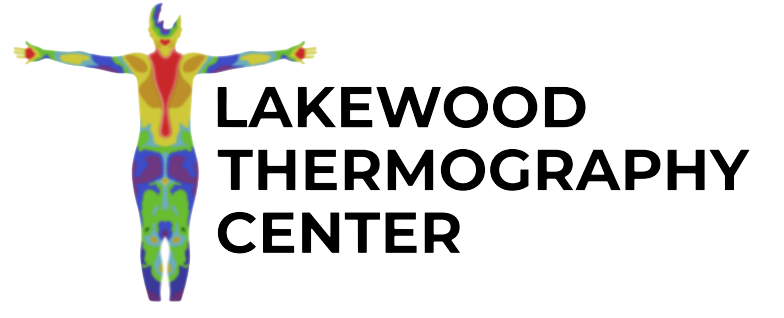THERMOGRAPHY CASE STUDIES
9x7x5 cm Tumor

This breast thermography case study shows the thermal effect of a 9 cm tumor. The heat can be seen leaching out away from the breast tissue and into the lymphatic region surrounding the breast. Thermography is a great tool for assessing the extent of potential damage from breast cancer.
6 Month Follow-up

This breast thermography case study shows the importance of regular follow-up scans. As seen here, changes can happen rapidly with active breast cancer. In some cases, waiting one year or longer for a follow up scan can be detrimental. More frequent follow-up scans such as 3 months may be warranted. As always, we strongly recommend adhering to the follow up recommendations made by our board-certified interpreting physicians.
Lymphatic Involvement

This breast thermography case study demonstrates breast cancer with lymphatic involvement. The areas of intense red on the left breast indicate heat due to the extreme inflammatory nature of breast cancer. The thermal heat pattern can be seen continuing from the breast, down into the abdomen. This indicates there is involvement of the lymphatic system. The lymphatic system can act as a highway, transporting cancerous cells from the breast to other regions of the body. Evaluating lymphatic involvement with breast thermography is an important aspect in determining the extent of the cancer’s damage and its potential for metastasis (spread to other regions of the body).
Thermal Effects of Aberrant Posture

Thermography can be used for more than just breast studies. This full body thermography case study shows the stress of poor posture on the human body. Here, a lateral thoracic translation can be seen. The red areas are areas of hyperthermia (increased heat), indicating biomechanical stress in the form of inflammation. Full body thermography is an effective way to assess for and monitor improvement of musculoskeletal dysfunction.
36 Treatments

Thermography can effectively monitor progress in neuromuscular conditions. This full body thermography case study shows the improvements made by a Chiropractic patient. The physician treated her neuromuscular complaints and took follow up scans at 12 visit (1 month) increments. Thermography is a valuable tool for assessing and monitoring improvement in neuromuscular conditions.
Squamous Cell Carcinoma

This thermography case study shows a squamous cell carcinoma that was caused by radiation therapy from a contralateral lymphoma. Notice the areas of heat surrounding the center. On thermography, areas of excessive heat (red and white) could be indicative of angiogenesis. Angiogenesis is the formation of new blood vessels which results in increased blood flow to the area, supplying tumors and cancer cells with the nutrients they need for growth and reproduction.
Inflammatory Breast Cancer

This breast thermography case study shows the rapid progression that inflammatory breast cancer can present with. This patient attempted several alternative treatments. She refused surgery and traditional forms of cancer treatment, against the recommendations of her doctor. Breast thermography can aid in monitoring breast cancer throughout the treatment process. Thermography is 100% safe and radiation free which allows for imaging as frequently as necessary for peace of mind while undergoing traditional forms of cancer treatment.

